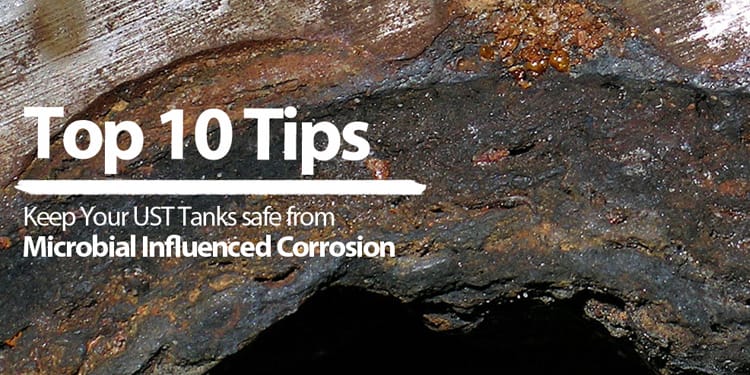
Top 10 UST Tank Maintenance Tips
All fuel storage tanks are vulnerable to failure due to Microbial Influenced Corrosion (MIC).
The refining process essentially sterilizes all fuels, however clean fuel can become contaminated soon after leaving the refinery from a variety of sources. Microbes can be picked up through the distribution and delivery chain, from ground water, or through the atmosphere through vents. Bacteria alone is not a serious issue until it finds a fuel-water interface to colonize.
The bacteria microbes can begin to metabolize (grow and reproduce) at the fuel/water interface. Left untreated, bacteria in the tank will set up the environment for MIC to develop that will lead to a tank failure. Both gasoline and diesel steel and fiberglass fuel storage tanks are subject to damage caused by MIC.
MIC left untreated will cause internal corrosion leading to a failed tank, however, this can be prevented with good tank operating practices.
In order to minimize potential tank damage, we have our Top 10 UST Tank Maintenance Tips, to keep your UST tanks safe from MIC.
- Keep water of your tanks and if you discover water; find the source and eliminate it.
- Inspect your fill and probe caps for tightness regularly and replace the gaskets on the caps at least annually.
- Never allow surface water to pond over the top of buried tanks.
- Check for water in your tanks with a “gauge stick” along with water finding paste.
- Do not rely on your Automatic Tank Gauge to check for water; ATG probes are designed to detect amounts of water of 2″ or higher.
- Remove water accumulated on your tank bottoms when detected.
- Collect bottom fuel samples and let the sampled fuel settle in glass jars for visual evaluation of fuel quality.
- When collected samples appear to contain contamination, test for the presence of live bacteria. When bacteria test results are positive, treat the affected tank with a biocide recommended to treat motor fuels.
- When tanks are contaminated with bottom water, sediment and sludge, a tank cleaning is recommended.
- Always have in place continuous leak detection and inventory management for all tanks in operation.